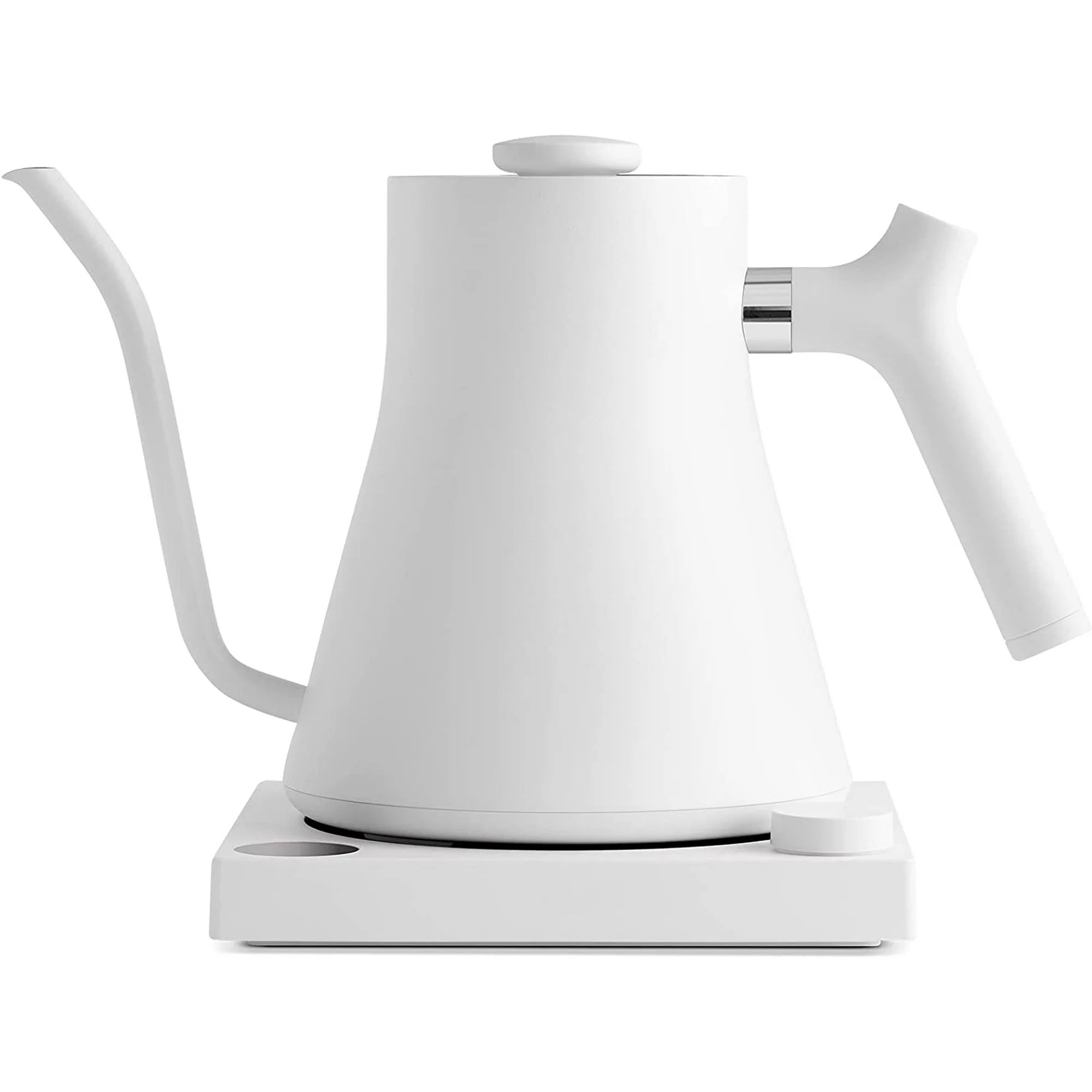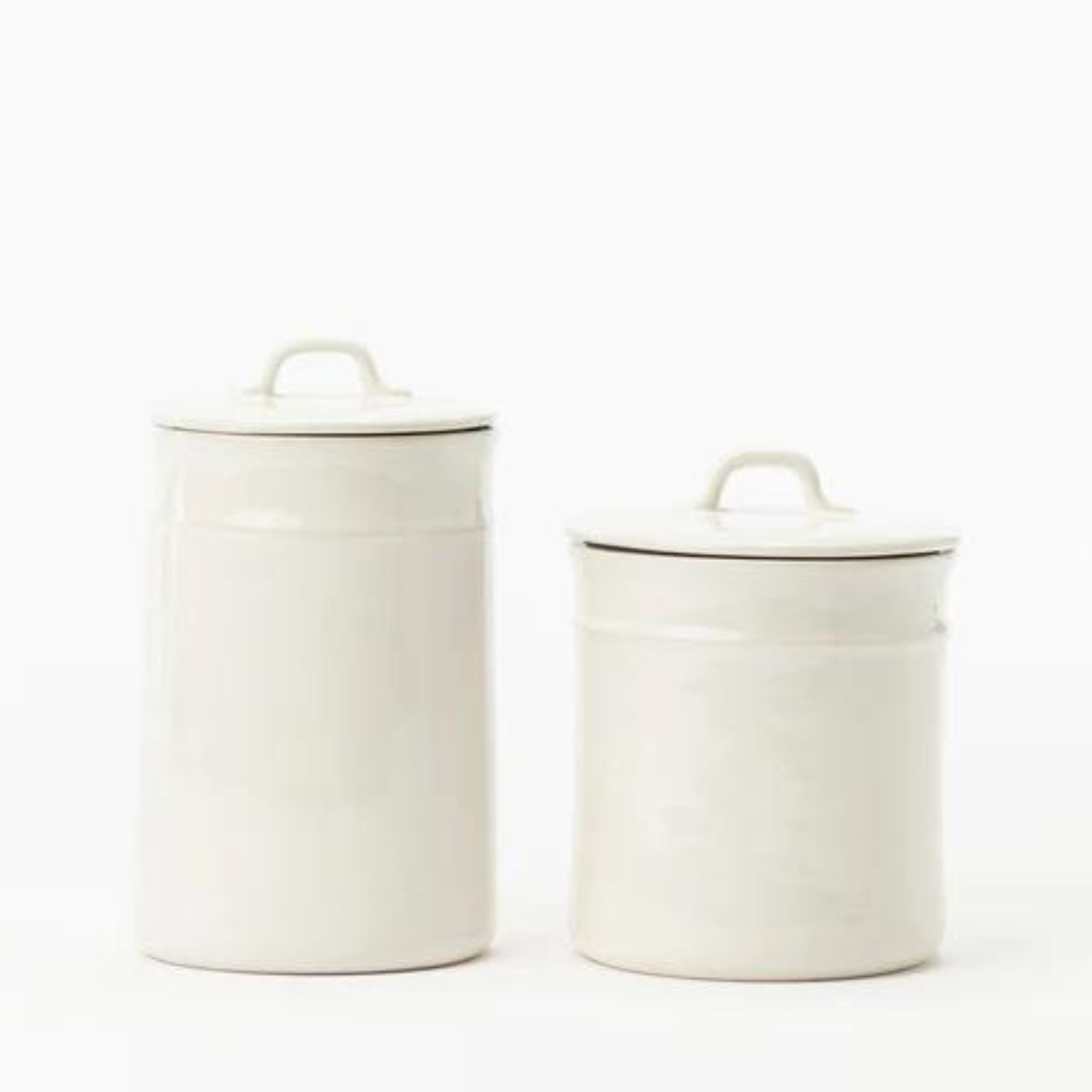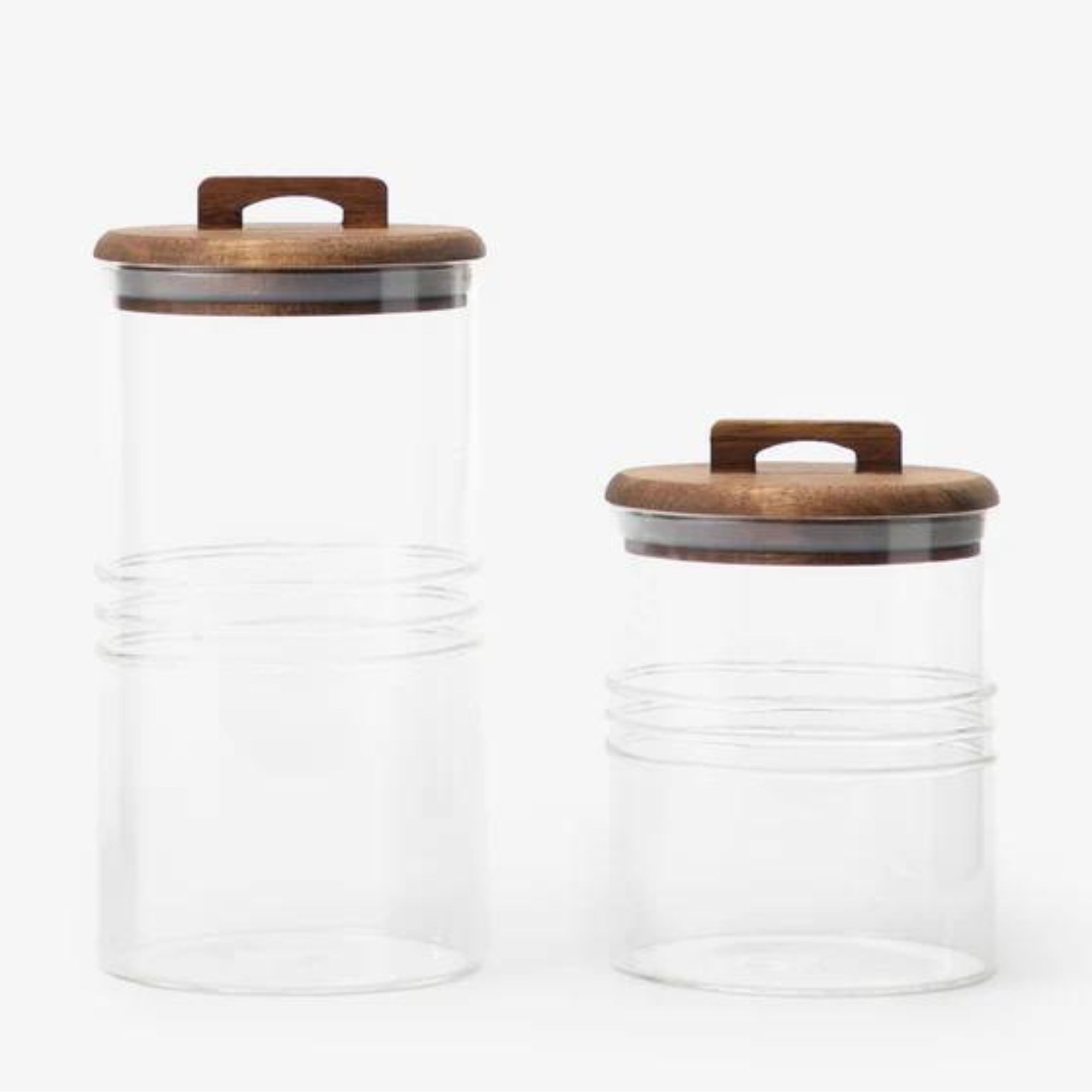9 expert-approved coffee station ideas – to make your morning brew even more enjoyable
Design a coffee station that is as functional as it is chic with these expert design tips from interior designers
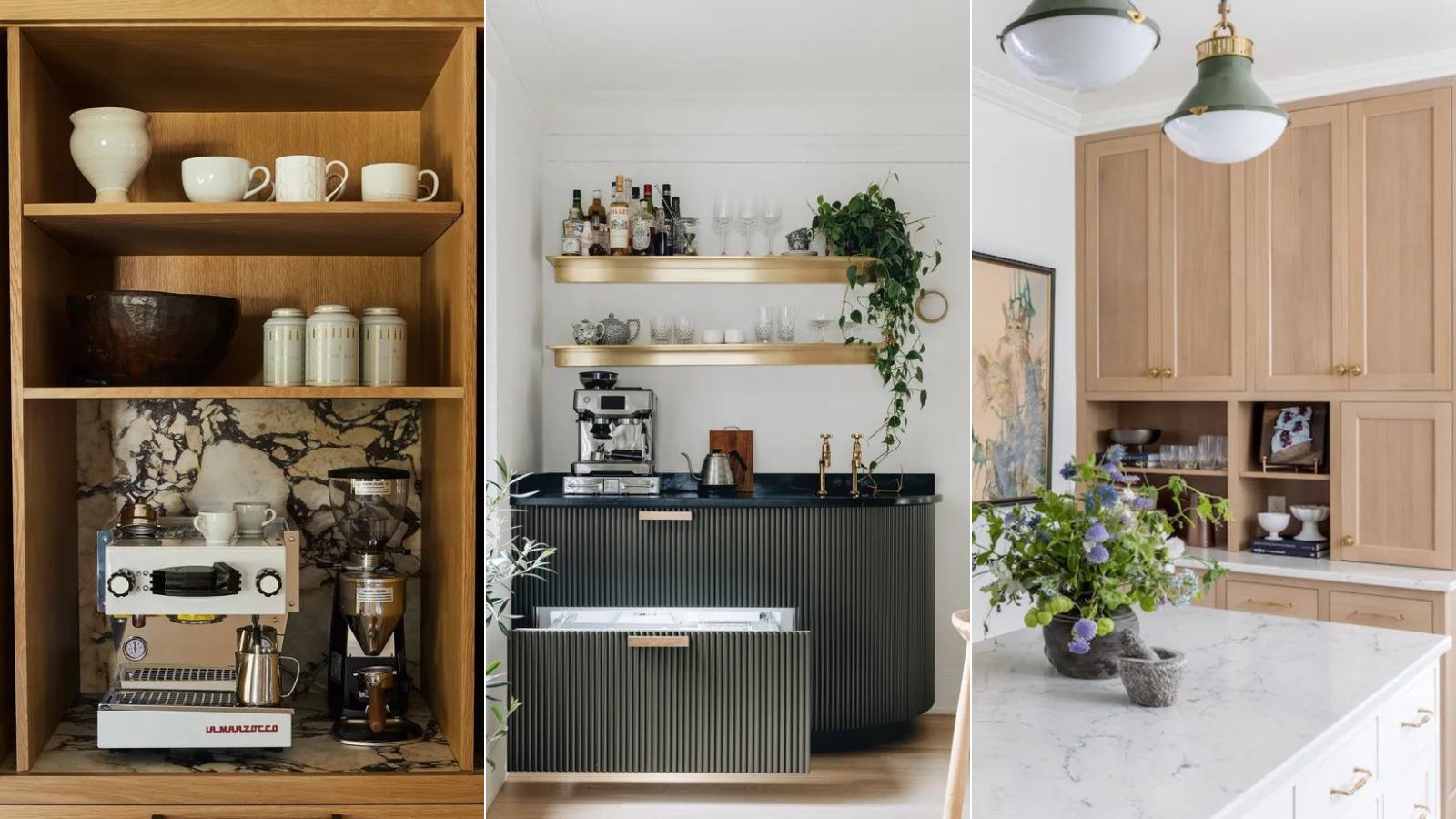
- 1. Choose the perfect coffee machine
- 2. Ensure your coffee station functions effectively
- 3. Use durable materials for a coffee station that lasts
- 4. Take style inspiration from the rest of your home
- 5. Get creative with storage solutions
- 6. Consider adding a coffee station outside the kitchen
- 7. Convert a cupboard for a hidden coffee station
- 8. Make your coffee station a place to escape to
- 9. Consider your coffee station lighting

Molly Malsom
The morning coffee craving is nearly universal, and a fresh cup of joe is hard to beat. If your at-home coffee station consists of a dated coffee maker or is relegated to a small corner, it may be time to upgrade. Creating a beautiful space for this morning ritual will be well worth it in the long run.
Creating the ultimate coffee bar or station at home is relatively simple and will certainly make your mornings brighter. From storage ideas to aesthetic tips, interior designers have plenty of advice on creating the perfect space for the best coffee makers and all of your coffee-related essentials.
'Everyone needs that morning caffeine pick me up. Whether you are building in a Miele coffee system, a freestanding espresso maker, or a good old-fashioned drip coffee maker, there are a few design elements to your coffee station that make it more functional and beautiful,' says Caitlin Jones Ghajar, principal designer of Caitlin Jones Design.
How to design a coffee station at home
It's easy to see the benefits of having a sleek and sophisticated coffee station in your own home, but it can be difficult to know where to start. And with the at-home coffee station rising in popularity, now's the time to hop on the interior design trend.
Whether you opt for a designated zone for your coffee station or create a multi-functional space that doubles up as a breakfast bar with space for a toaster and breakfast food storage, there are so many fun and versatile ways to create a coffee station that works for you.
And, of course, a coffee station needn't be in the main kitchen; if you have the space, sitting it out of the way in a walk-in pantry or back kitchen can be a practical choice.
1. Choose the perfect coffee machine
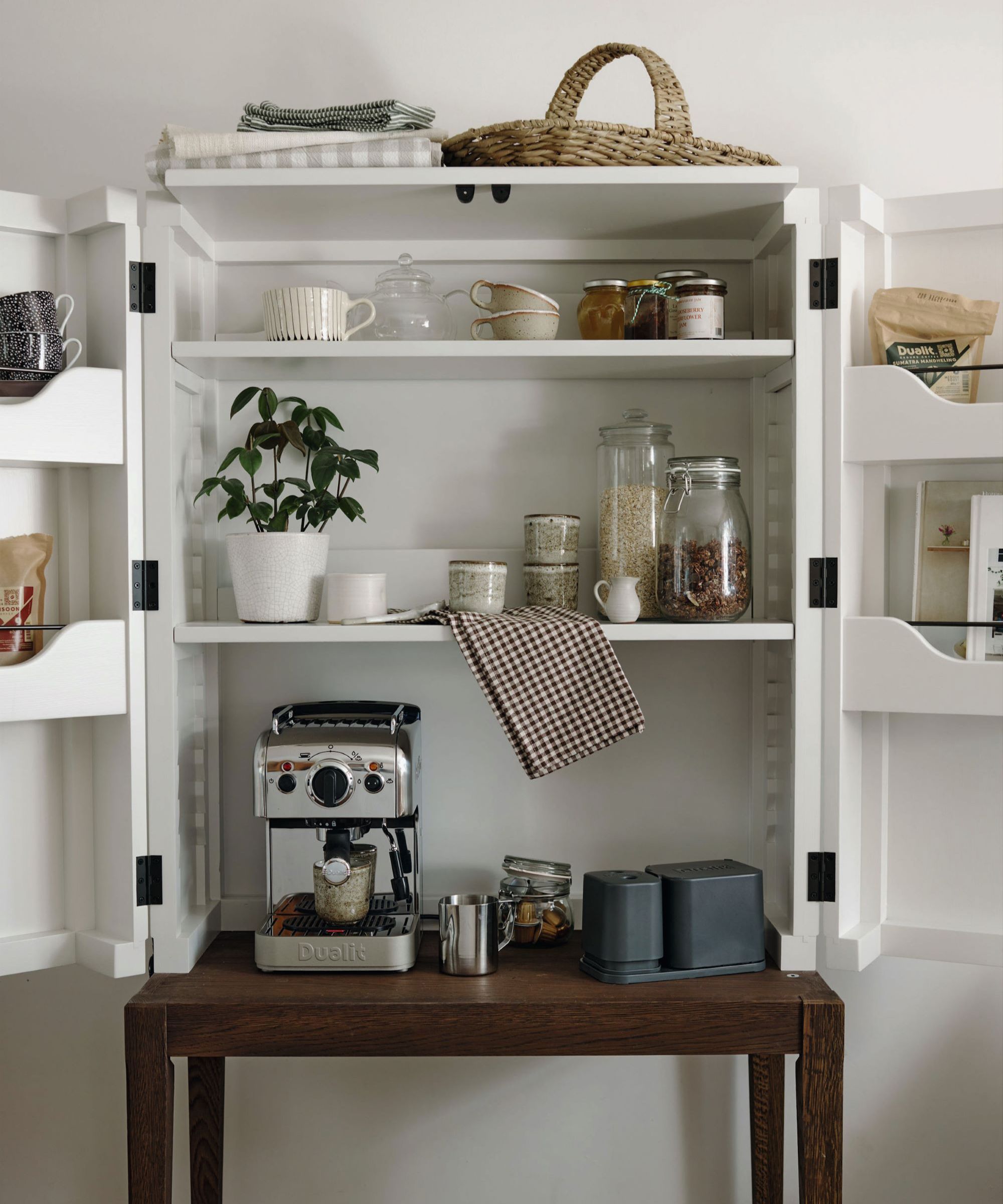
No coffee station is complete without the perfect coffee machine – in fact, it’s probably the most vital piece of your design. There are lots of different types of coffee makers on the market, each suited to a very different kind of coffee drinker, so take your time choosing the right pick for you.
Design expertise in your inbox – from inspiring decorating ideas and beautiful celebrity homes to practical gardening advice and shopping round-ups.
Laura Honey, our trained barista and e-commerce editor, says, ‘I love my espresso machine (it’s the Breville Bambino Plus which you can buy from QVC). This style of coffee maker is the same one that baristas use, so if you want to emulate that café experience, it’s the perfect investment’.
The coffee machine you choose will have a big impact on your coffee station design – if you choose one that’s visually appealing, you may choose to keep it exposed, but if it’s functional but not the most beautiful, you might then opt for a hidden coffee station instead.

This coffee maker ticks every box when it comes to making the best brew, making it the perfect addition to your coffee station. Whether you're new to coffee machines or use one as part of your daily ritual, this filter coffee machine won't disappoint.
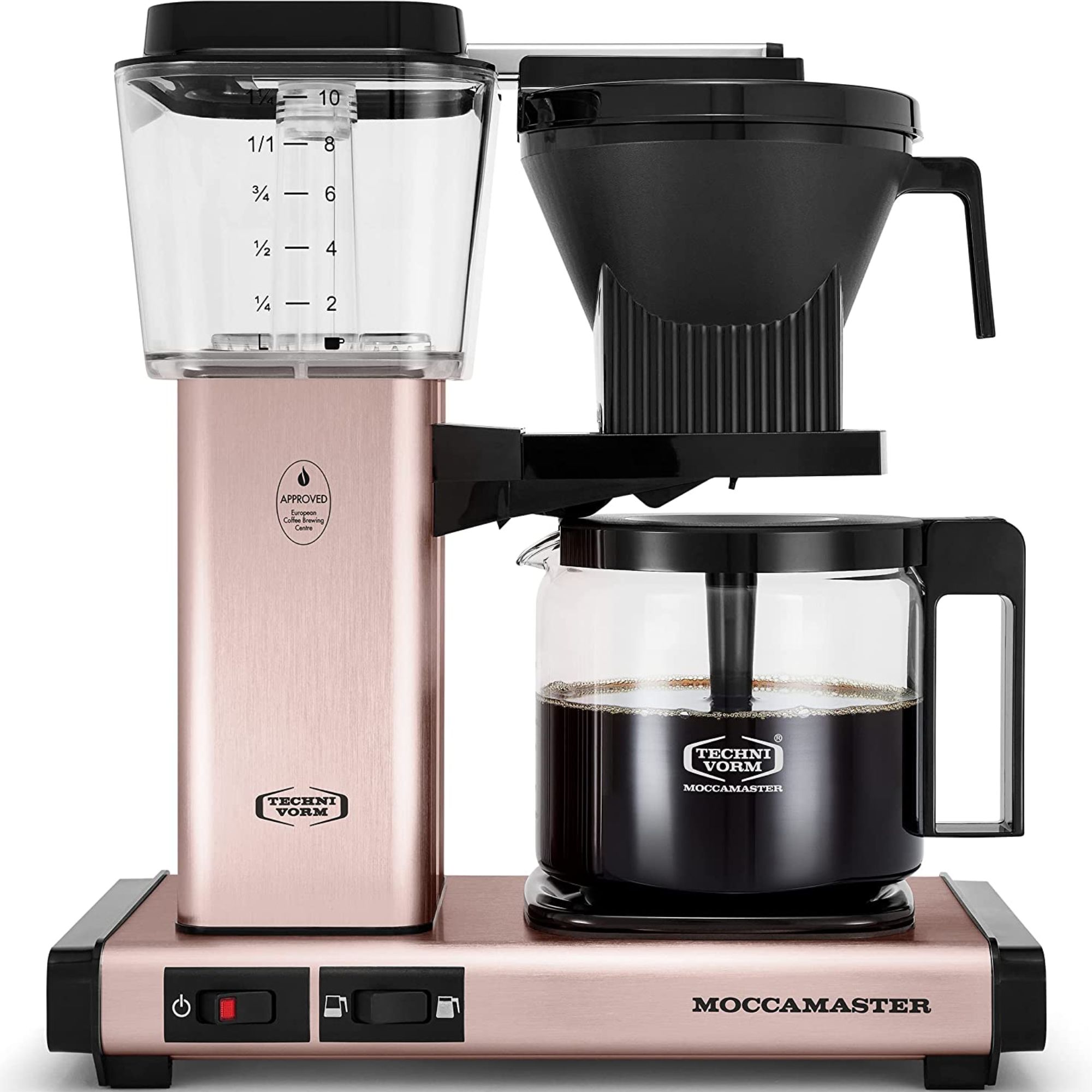
This drip coffee machine deserves to be on full display in your coffee station. As aesthetically pleasing as it is great at making drip coffee, this machine is one of the quieter options and comes in a range of colors, so you can choose something to suit your coffee station scheme.

The best for café-style coffee
For a coffee machine that's unfussy and easy to use while still looking the professional part, this coffee machine is a winner. This coffee machine might look high-tech and impressive, but it's easy to use and creates a versatile range of coffees.
2. Ensure your coffee station functions effectively
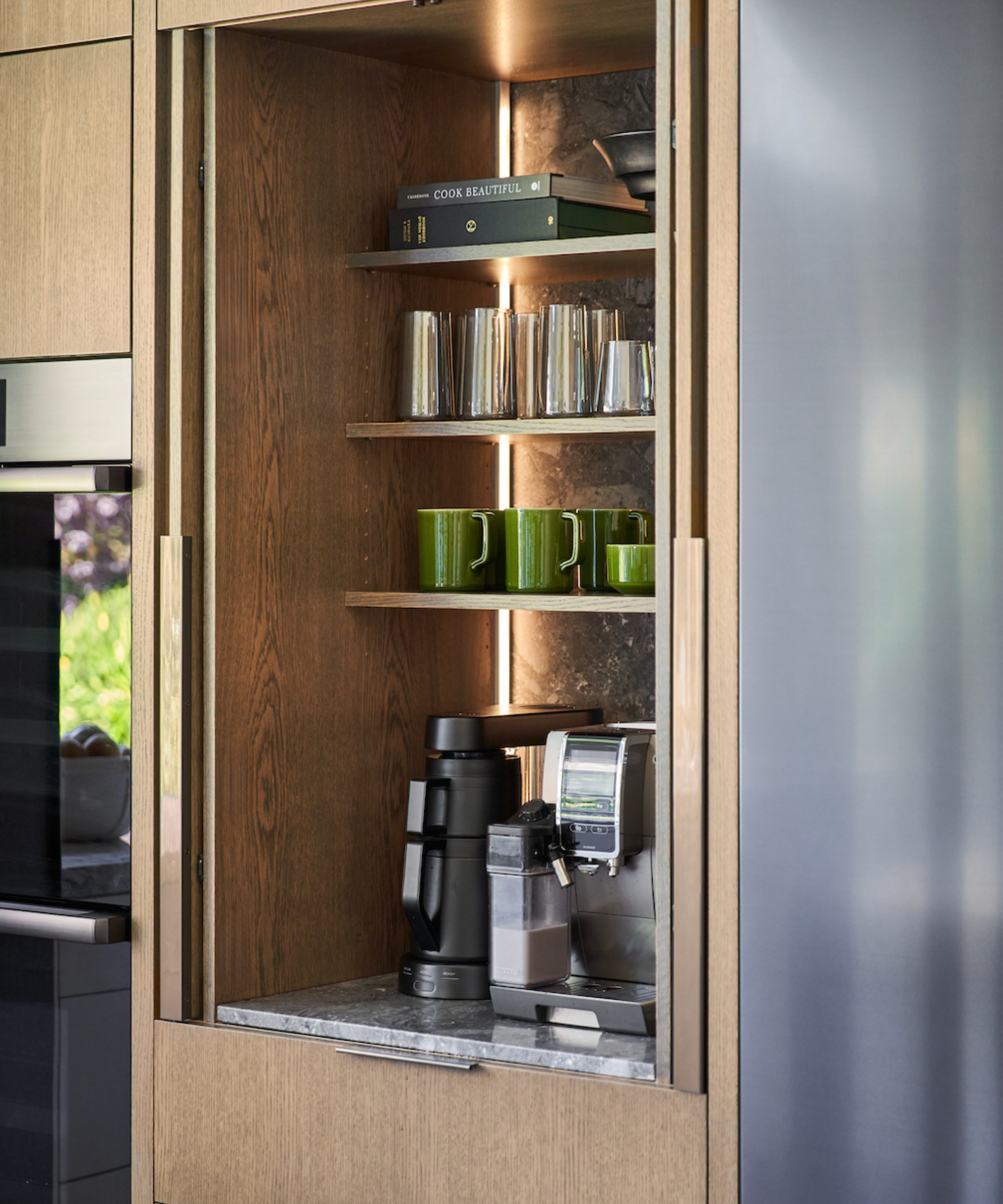
There are plenty of aesthetic-focused aspects to consider when creating your coffee station, but function is super important, too. Think about the items you want to keep at your coffee station and where they are best placed for easy use.
Casey Howard, principal designer at Casey Howard Interior Design, adds that both functionality and beauty are important seeing as your morning coffee or tea routine sets the tone for your entire day.
'Ensure there’s a place for everything – from small appliances to mugs and accouterments – quick, easy, organized access is essential for when you haven’t yet had your coffee,' says Casey.
Another functional aspect to consider is whether there are enough plug sockets within reach of your coffee station for the appliances you want to include. ‘Plug sockets are a must for all the small appliances and make sure shelf height allows for access to replenish the coffee machine,’ advises Jayne Everett, creative director at Naked Kitchens.
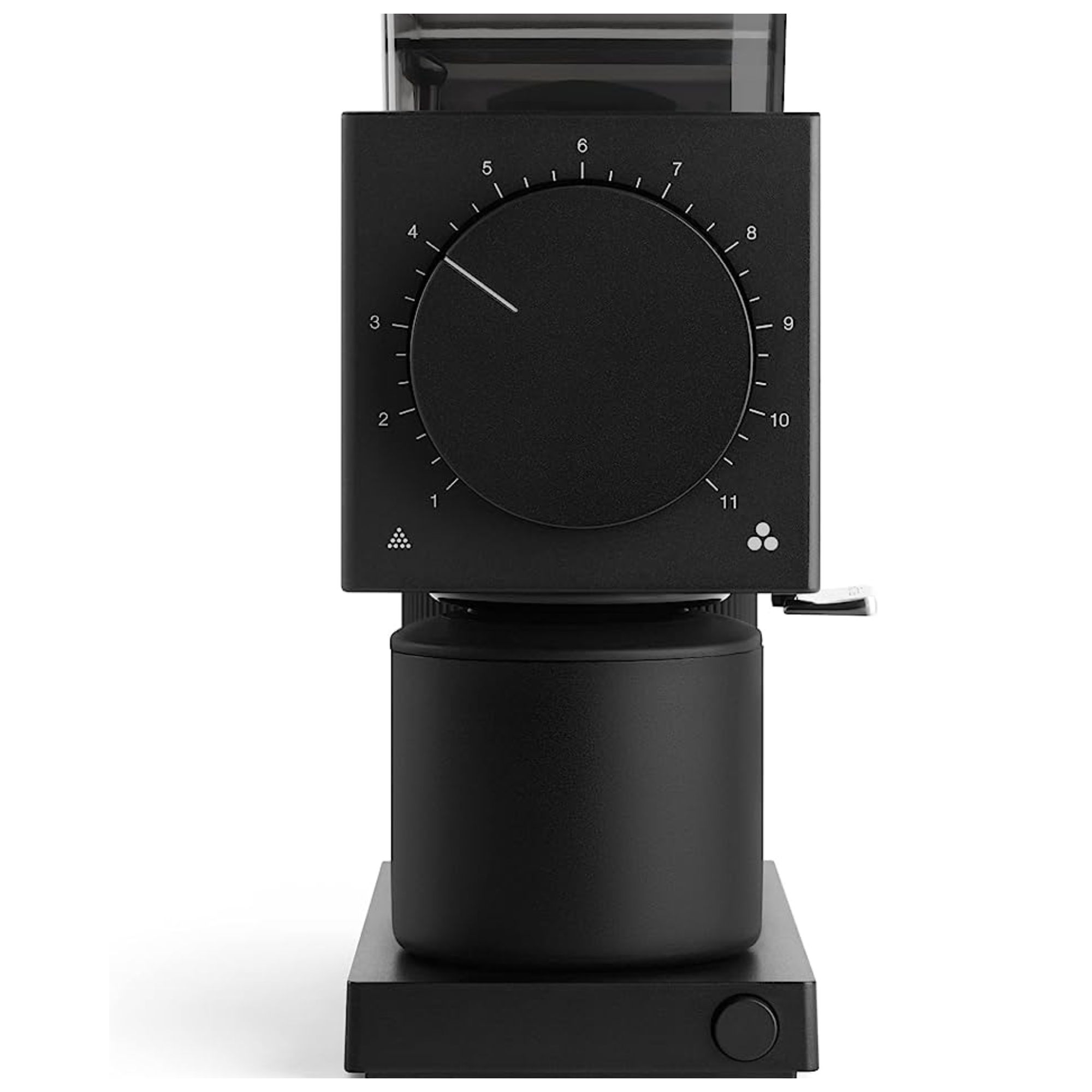
A coffee grinder is essential for anyone who takes their morning brew seriously. This one is great for seamless (and delicious) grounds.

A milk frother always comes in handy, so keep one on hand in your coffee station. You can read our detailed Nespresso's Aeroccino 4 review for more details.
3. Use durable materials for a coffee station that lasts

While it's easy to get carried away with beautiful, elegant materials, your coffee station will likely get a lot of use, so choose materials that are hardwearing as well as visually appealing. Think of durable materials for the countertop and storage areas to ensure that your coffee station will last for the long term.
'Use rich, functional materials – we extend the stone surfaces from the main kitchen into the coffee station to provide a beautiful counter space that is one with the rest of the space,' says Casey Howard.
Extending your existing kitchen countertops into your coffee station is a great way to add a cohesive and seamless blend between spaces, but if you want to create contrast and unique appeal for your coffee station, opt for a contrasting countertop or a bold color for your cabinetry and shelving.
4. Take style inspiration from the rest of your home

Pulling color schemes and material combinations from the rest of your home, and especially from the kitchen, can help you create a seamless transition into your new coffee-centric space.
Keep kitchen classics in mind, but don't be afraid to take a bit of creative liberty and distinguish the two spaces of your home. Karen Frome, architect and founding partner of Rise Projects, says that she often takes cues from a regular bar set-up when designing coffee stations for clients.
'In many cases, the design of an at-home coffee station is not dissimilar from a typical bar, with an eye on metal finishes, stone, and lighting. We often take inspiration and elements from the overall design of the home – we gravitate towards earthy tones and natural materials like woods, stone, and raw brass for the coffee niche,' she says.
5. Get creative with storage solutions
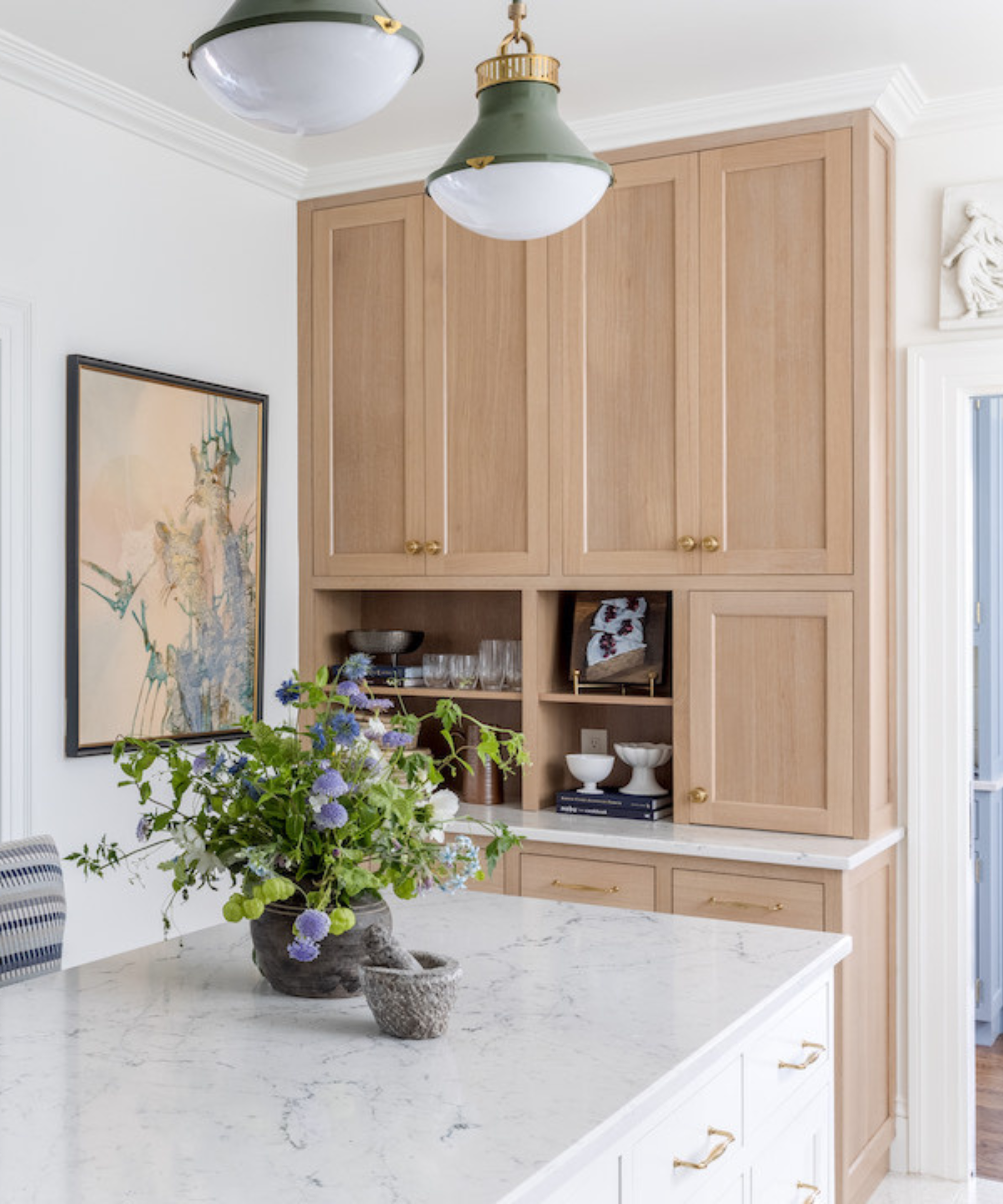
Depending on the details of your coffee routine, quite a bit of equipment can get involved – and you'll need ample space to store it. 'I generally like to include a single open shelf to display beautiful mugs and handled glassware. Other than a small open area, it’s best to have ample closed storage to hide the extra supplies which aren’t as beautiful to look at,' says Caitlin Jones Ghajar, principal designer of Caitlin Jones Design.
Beyond that, be sure to measure the items you'll use often to ensure they'll fit on any shelves or in any drawers that you set up. And think outside of the box for storage solutions – having the option to hide the less aesthetically appealing items will come in handy.
'When choosing your cabinet design determine whether you want your equipment exposed. If you have a simple drip coffee system, it is best to hide it behind a flip-up door, whereas a beautiful espresso unit can be proudly displayed. If you don’t have a lot of adjacent counter space, having a pullout breadboard shelf works exceptionally well,' adds Caitlin.
6. Consider adding a coffee station outside the kitchen
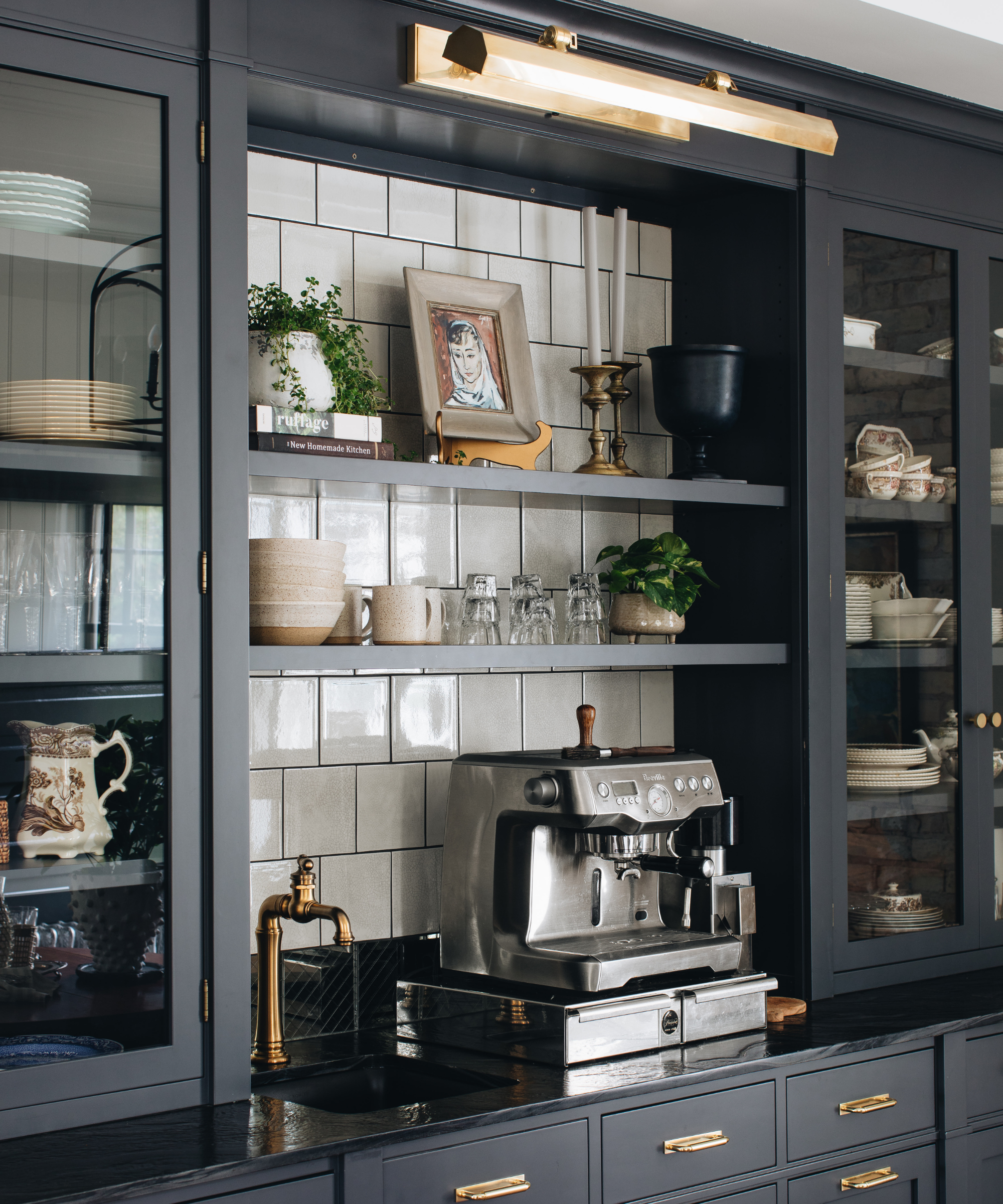
Jean Stoffer, founder of Jean Stoffer Design, says she considers coffee stations to be 'the new must-have in custom kitchens' as more people become interested in having an espresso machine at home.
'Coffee is now a part of entertaining; offering specialty coffee drinks is a wonderful way of showing hospitality to guests,' she says. And because coffee rituals have taken on a life of their own, finding a space outside of the main kitchen can be ideal.
Jean Stoffer says that some people find it more convenient to make and enjoy their coffee away from cooking and cleaning areas. When it comes to design, she suggests a few standby materials.
'There are certain materials that are well suited to coffee's unique needs. One such need is a durable, dark-colored countertop. Many cabinetry materials work well, including painted finishes and wood stained finishes,' she says. Opt for a design and color palette that feels cohesive with the space you’re adding your coffee station to, to ensure it feels at home in your chosen location.

Jean Stoffer leads Jean Stoffer Design, an award-winning interior design studio based in Grand Rapids, Michigan, with her daughter, Grace Start. She starred in Magnolia Network's The Established Home, and wrote the interior design book, Establishing Home.
7. Convert a cupboard for a hidden coffee station
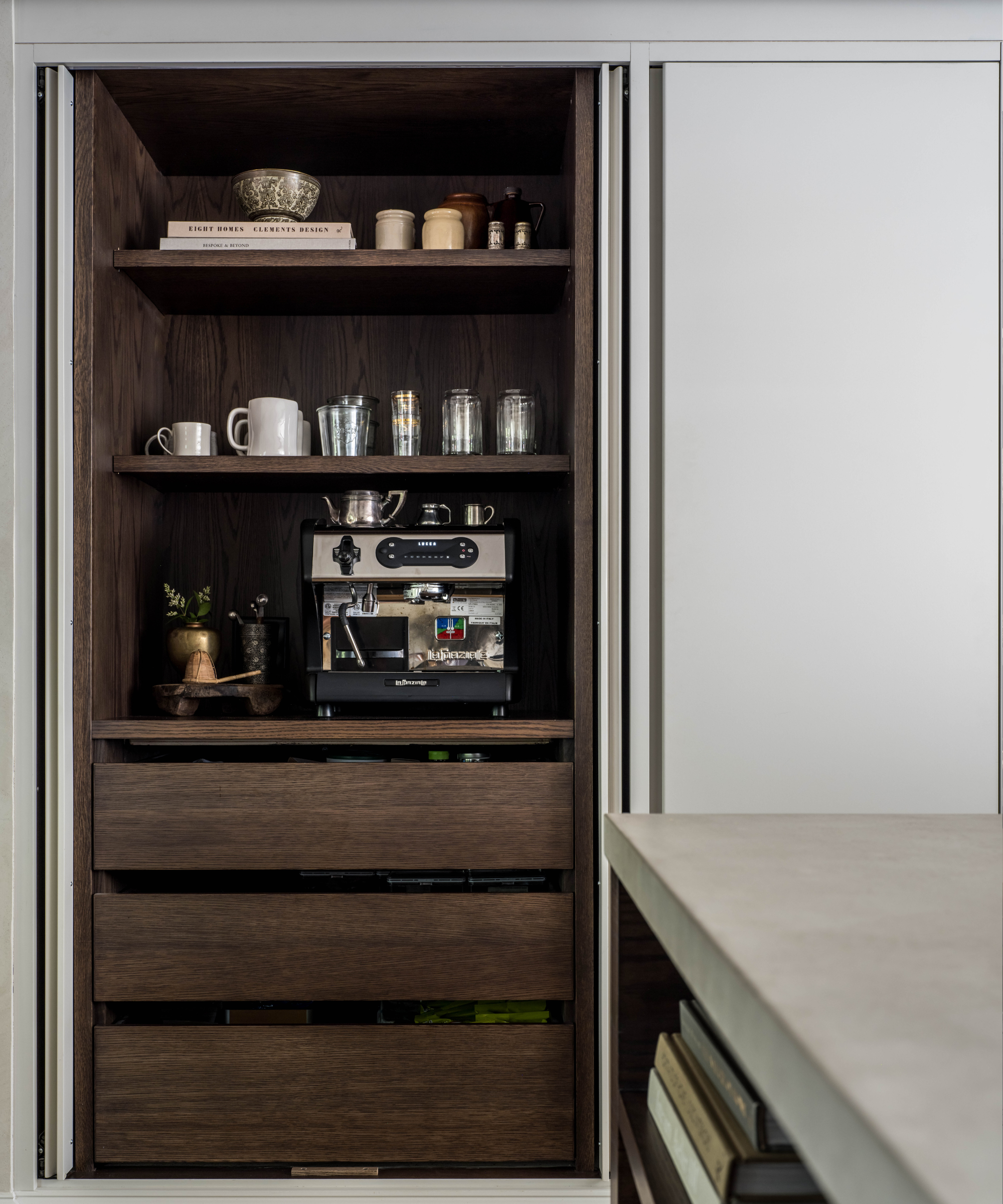
If you like the idea of an at-home coffee station, but don't want to deal with extra clutter, Blair Moore – creative director and principal designer of Moore House Design – suggests opting for a concealed, or hidden, option. 'This is one of those spaces that we know gets messy so for us it's about function with the ability to close off the mess,' she says.
There are many ways to stow a coffee station away, such as converting an unused kitchen cupboard, but Blair says she loves to use a retractable door, which makes it incredibly easy to open up and close off the area at a moment's notice.
'Using a stain grade wood over a paint grade for interior durability with style. There is something about housing a dark moment inside a neutral set of cabinet doors that I love,' says Blair.
In this scheme, a mid-century modern-style kitchen cabinet with integrated pulls easily hides away a warm and inviting coffee station. Blair says these details made the area feel 'streamlined and minimal' while still adding character and charm.
8. Make your coffee station a place to escape to
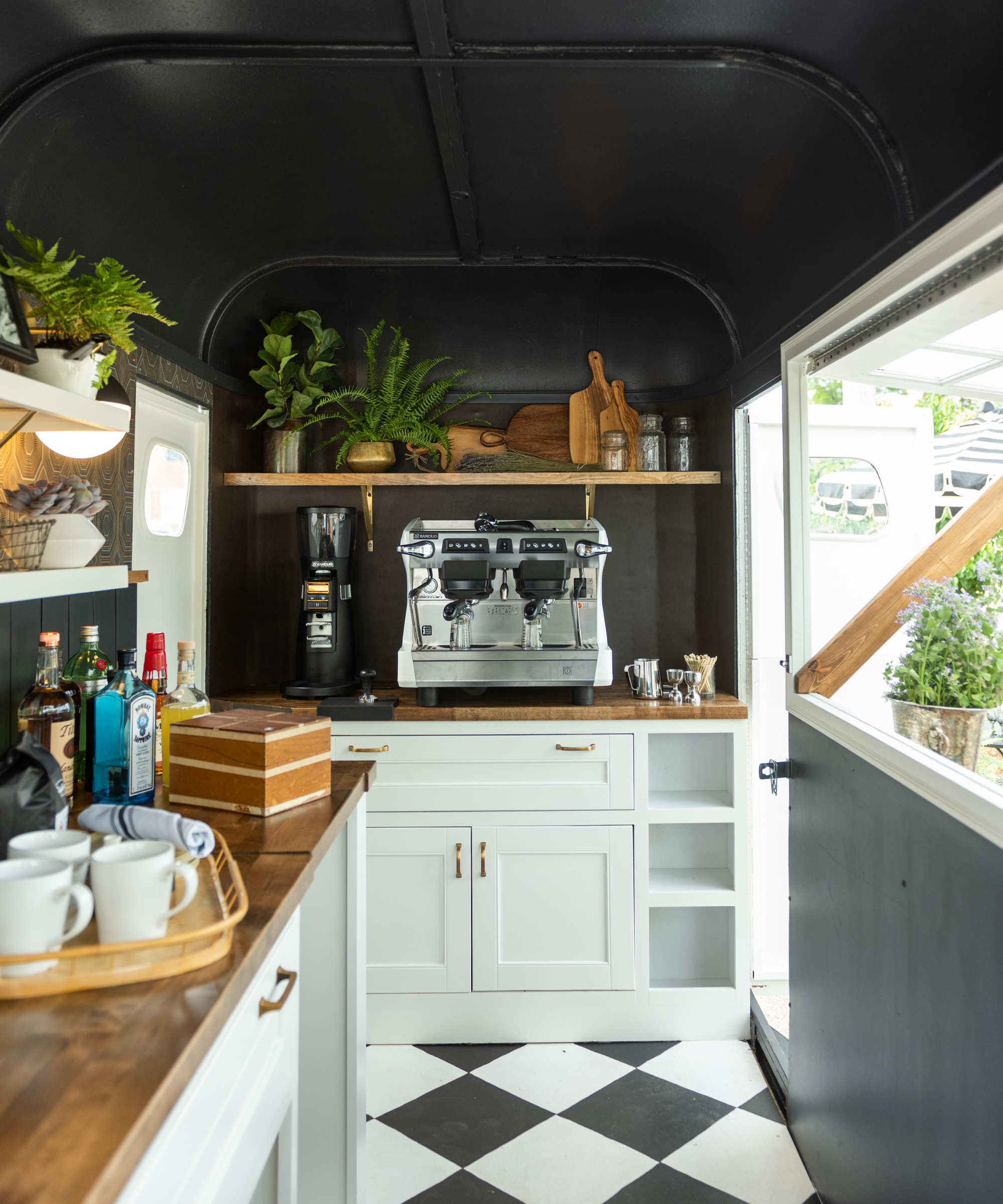
If at a loss for design inspiration when crafting your coffee station, bring in elements of other relaxing spaces in your home. In this renovated trailer, a boutique hotel served as the main reference point.
'Drinking coffee is an experience, so we like to make the spot you refill your cup feel like a destination. For this horse trailer turned mobile coffee cart, we brought in wallpaper, patterned floors, and sconces to make it feel like you’re in a chic and cozy hotel while you enjoy your favorite morning treat,' says Emily Frank, Frank & Co. founder.
By layering materials, patterns, and features borrowed from another upscale, luxurious space, Frank created a coffee sanctuary in a relatively small space. Set up with an espresso machine and milk frother – as well as a separate area for alcoholic beverages – the smart design would be a welcome addition to any home.
9. Consider your coffee station lighting
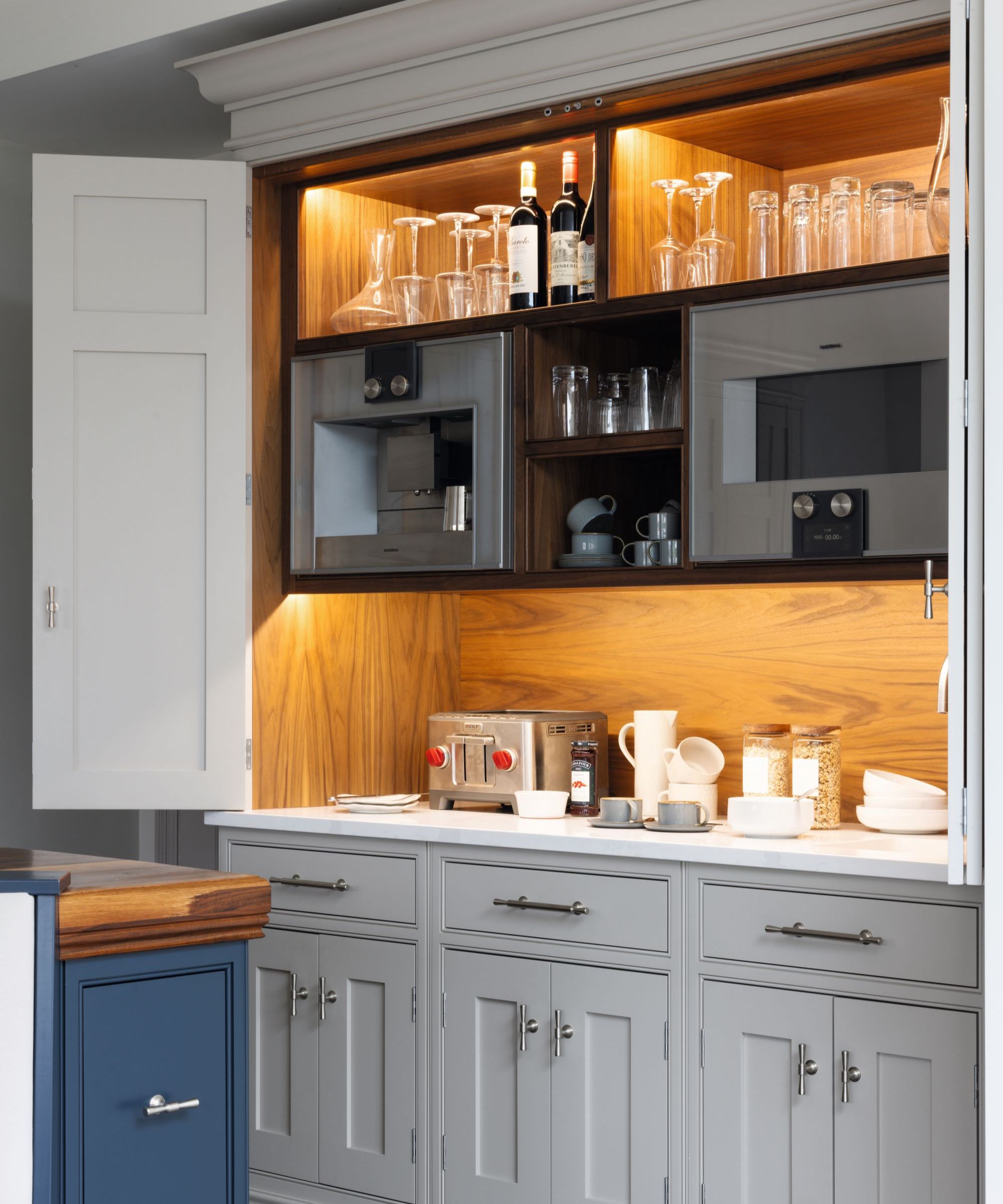
Much like kitchen lighting, your coffee station needs sufficient light to be functional, but also to add a warm and welcoming ambiance to the space.
There are a few different coffee station lighting options to consider, from LED strips to decorative wall sconces. 'Soft lighting that activates when the doors are opened elevates the area and provides essential illumination,' says Casey Howard.
Door activated lights will not only add the necassary lighting, but they can add a sense of luxury to your coffee station, too. Plus, it’s one of the more eco-friendly options, if that’s something you factor into your design decisions.
Intentionally placed and equipped with stunning materials and functional storage, your new and improved home coffee station is sure to transform your morning pick-me-up. Create your own coffee sanctuary, and fuel up – your morning will be a breeze.

Abby was the Interior Design News Editor at Homes & Gardens and is now studying for her Master's degree in Journalism at City University, London. Prior to joining our team, she worked with Better Homes & Gardens, where she wrote and edited content about home decor, gardening tips, food news, and more. She studied Journalism and English Literature at New York University and moved to London to pursue her love of writing in 2023.
- Molly MalsomKitchens & Bathrooms Editor
